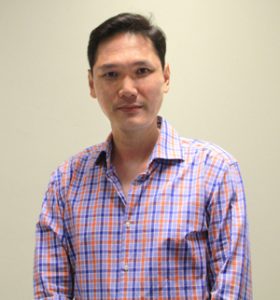Why Singapore’s English Teachers Should Embrace Singlish, Not Fight It
Is it time for Singaporean educators to embrace Singlish as a legitimate learning tool? What the Research […]
Read More
Assessment is commonly thought of as a useful tool for promoting effective learning. However, this is only so when it is utilized appropriately. A secondary school teacher from Chong Boon Secondary School shares how assessment can affect the teaching and learning process through the kinds of messages it sends to learners.

Kaycee Chan believes that assessment has a great influence on teaching and learning.
What is the similarity between a power drill and classroom assessment?
“They are both powerful tools,” Physical Education (PE) teacher Dr Kaycee Chan says in his workshop during the 3rd Annual Assessment Colloquium 2016 at NIE. “The power drill can help us drill a hole in the wall, and even function as a screwdriver. Similarly, assessment, with its formative and summative functions, can be adapted to suit different lesson objectives.
“Assessment holds immense power and influence over many educational issues that matter to us and affects how teachers teach and how students learn,” Kaycee adds. Teachers need to understand this power they have in their hands so they may wield this powerful educational tool more responsibly.
“If the power drill is in the hands of a carpenter, he or she can build beautiful furniture,” he explains, “but if it’s in the hands of an untrained and careless user, it can hurt people.”
This led to his interest in learning more about the implications of assessment in classrooms.
“What we choose to assess and how we assess it conveys important and powerful pedagogic messages to our students,” says Kaycee. For instance, if something is not assessed, does it then mean that it is not worth acquiring?
Assessment communicates the valued aspect of a subject and therefore has a significant influence on how teachers teach and how students learn.
Kaycee shares that a student once told him in class: “I don’t want to participate and learn the skills because PE is not examinable.” That incident made him realize that having PE as a non-examinable subject may inadvertently send a message to students that the subject is not important, and affect the way they approach their learning.
On the other hand, when the National Physical Fitness Award (NAPFA) test is used as the sole indicator for PE assessment, PE teachers may spend more time than necessary preparing students during the course of the year for just the test.
“We see a fitness-centric curriculum being enacted where students do a lot of running, push-ups and sit-ups in PE. This may do injustice to the otherwise rich learning in the other content areas that PE has to offer,” explains Kaycee. “We can see the influence of assessment requirements on our teaching and how it may cause unintended consequences such as a narrowing of curriculum in this case.”
Kaycee, who was part of the NAPFA review team, conceived a more holistic approach to better represent the valued contents in the PE curriculum. The team proposed to lower emphasis on the NAPFA test and to administer it on a biennial basis instead of annually. This proposal was eventually accepted and implemented by the Ministry of Education in Singapore.
“We need to have a good picture of what we want to achieve at the beginning so that assessment can be more aligned.”
– Kaycee, Chong Boon Secondary School
“We need to have a good picture of what we want to achieve at the beginning so that assessment can be more aligned,” shares Kaycee. “It is an important aspect of the teaching and learning process, so we have to pay attention to this area to enhance our students’ learning experience.”
The pedagogy employed then needs to move students towards achieving this objective by ensuring they know what is expected of them.
One way forward is to be clear about lesson objectives before the lesson begins. “After you identify your objectives, you can then start to plan your assessment to find out if the knowledge and skills are being realized by the students,” he says.
If the key learning objective of the unit is for students to be able to play a basketball game by the end of the unit, teachers should plan to assess students in a summative manner. For example, students’ basketball ability should be assessed based on how they perform in an authentic game situation instead of the number of shots they make from the free throw line.
It is insufficient to conclude that a student is a good basketball player based on the sole reason that he or she never misses a shot from a free throw line. Instead, teachers should look at the ability of the student in making successful attack moves in the presence of defending opponents.
“We have to look into the totality of teaching, which involves curriculum, pedagogy, assessment,” Kaycee explains. “In order to maximize students’ learning, these three must be aligned.”
“We have to look into the totality of teaching, which involves curriculum, pedagogy, assessment. In order to maximize students’ learning, these three must be aligned.”
– Kaycee, on the importance of aligning curriculum, pedagogy and assessment
The main challenge is bridging the gap between performance and expectations. “If students don’t know the assessment criteria, they will not be able to fulfil the requirements of the task,” shares Kaycee.
And if teachers fail to explain assessment criteria clearly, it may result in students not knowing what the teacher is looking for during assessment.
Clear and explicit explanation on what is expected helps students to be aware of the specific changes they need to make to their answers in order to meet assessment standards.
For Kaycee, this is a challenge he gladly takes up, and holistic assessment has become an integral part of his lessons. With him, PE lessons are definitely more than just learning to dribble balls and shoot hoops!